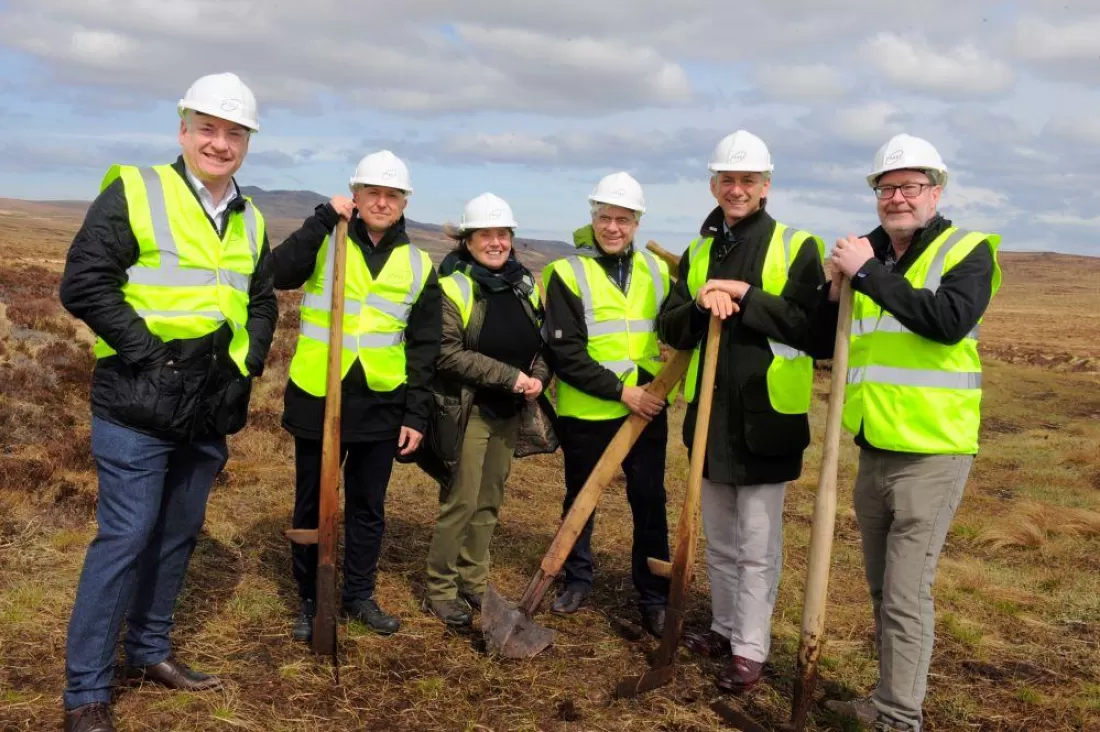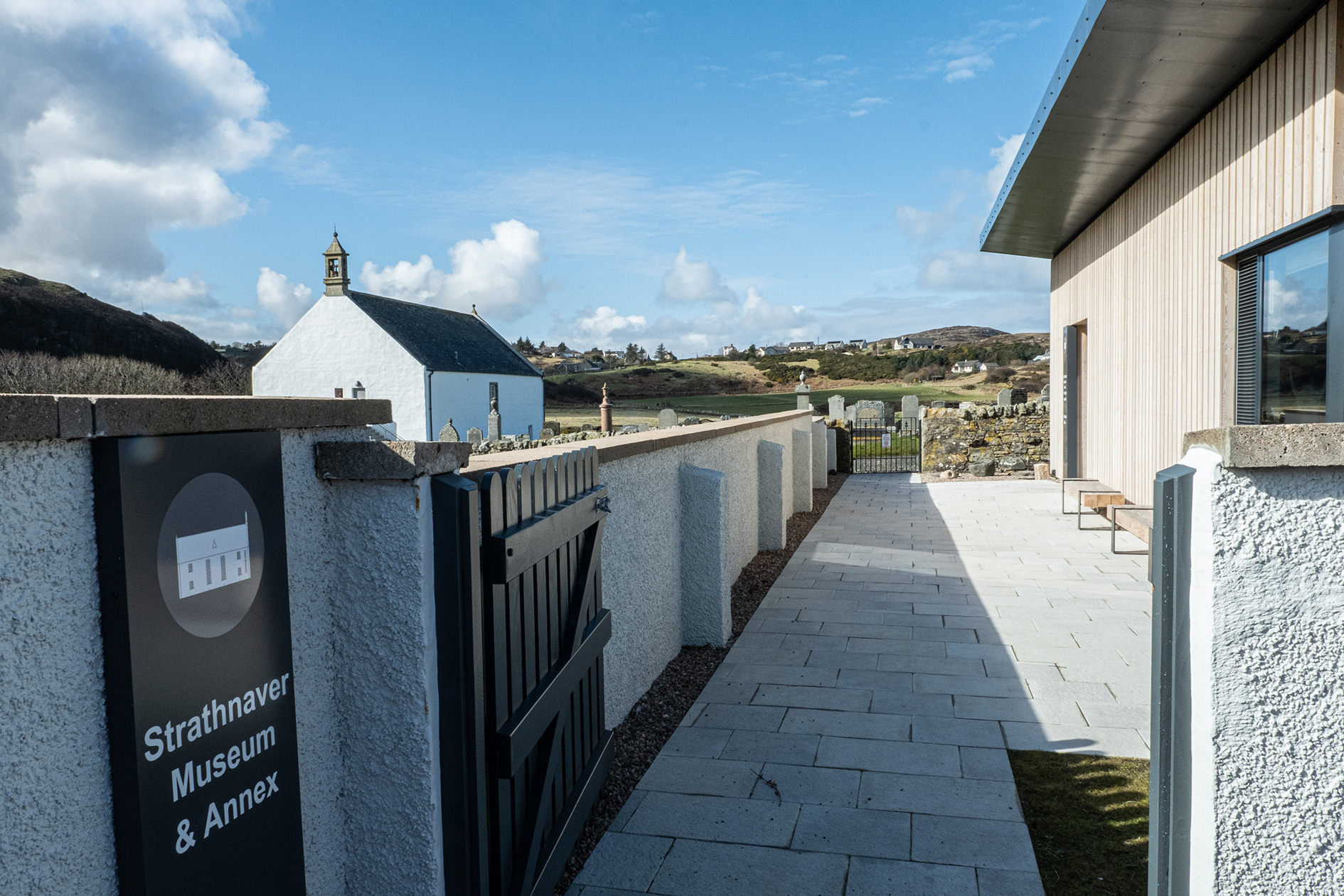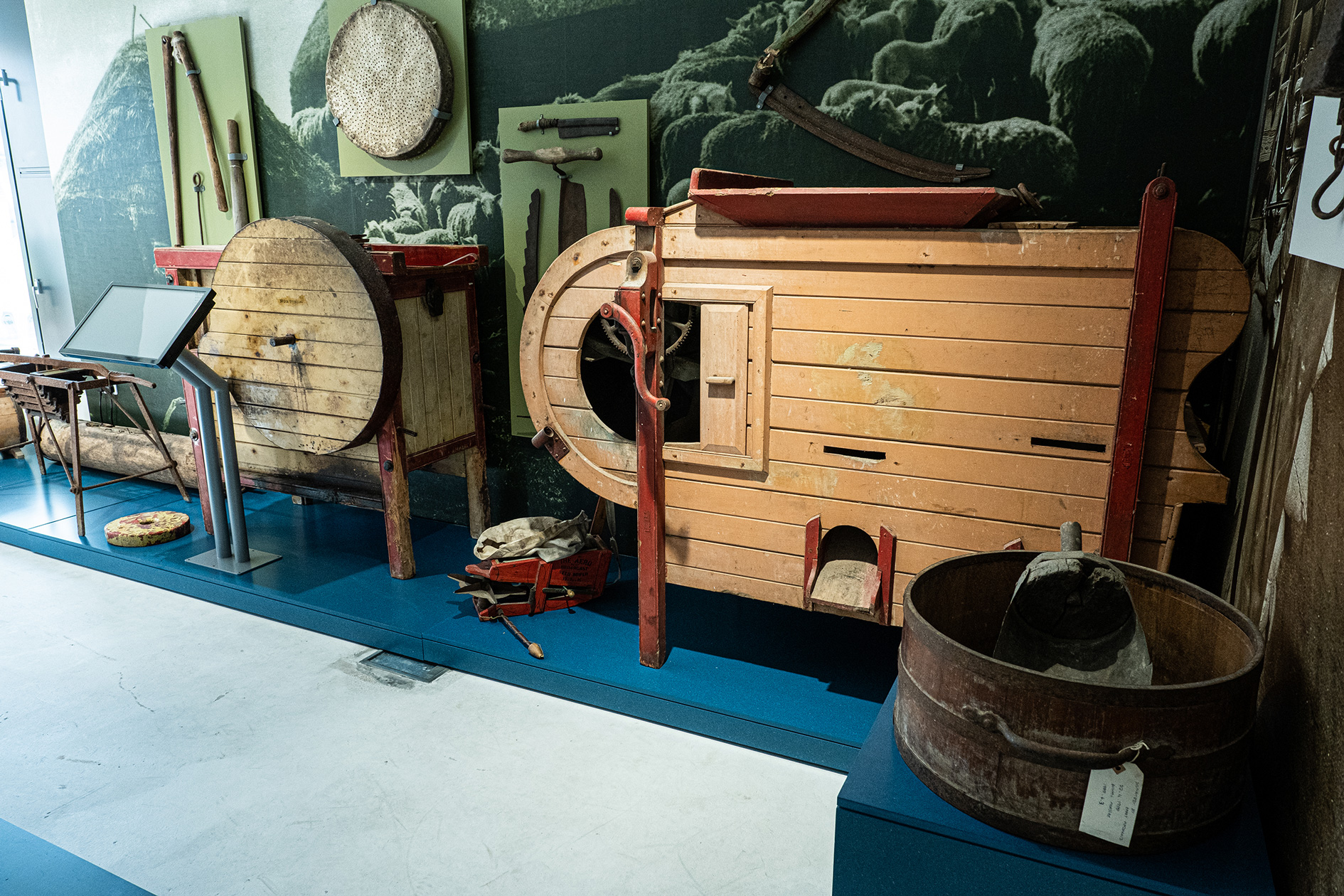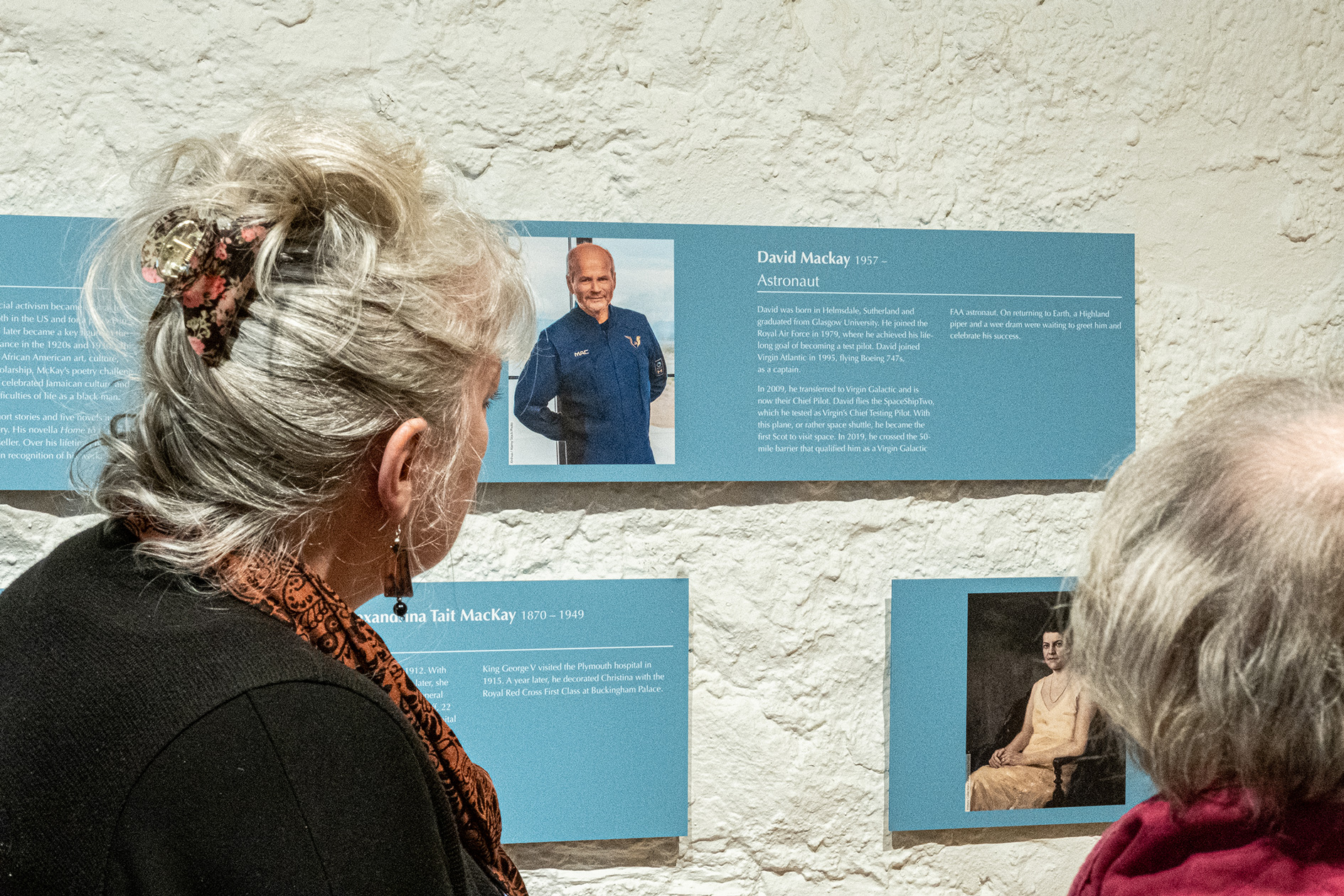Offshore Wind Power Limited plans to submit consent applications to construct offshore wind turbines and associated onshore transmission infrastructure for the West of Orkney Windfarm. The proposed windfarm will have the potential to generate around 2GW of renewable energy and is located around 30km west of Orkney and 25km from the north coast of Scotland. The onshore infrastructure will include up to 33km of buried cables and a new substation at or near Spittal.
The key components of the Project are:
OFFSHORE
• Up to 125 wind turbine generators with fixed turbine foundations
• Up to five offshore substations linked to the wind turbines via inter-array cables
• Up to five export cables to Caithness
ONSHORE
• New substation at or near the existing Spittal substation
• Up to five underground cables from the landfall point to the substation
To find out more about the West of Orkney Windfarm, please visit the virtual exhibition: https://www.westoforkney.com/virtualexhibition
The development team are keen to receive feedback which will be used to inform the development of the ONSHORE infrastructure of the West of Orkney Windfarm. This short questionnaire is one of the ways in which you will be able to express your opinion about the project. We would also welcome your feedback on our consultation. Please find the Survey Link
Pre-Application Consultation Events
The West Of Orkney Windfarm Pre-Application Consultation Events are taking place in June 2023 to discuss the onshore infrastructure related to the Project, including the associated substation and onshore cable route. Please see the dates below:
Tuesday 20th June 2023
Location: The Pentland Hotel, Thurso
Time: 3.30pm – 7.30pm
Wednesday 21st June 2023
Location: Ross Institute, Halkirk
Time: 3.30pm – 7.30pm
Taste North returns on Sunday, 5th November 2023
The festival, supported by Venture North, is returning to Wick High School, East Caithness Community Campus for a day filled with premier food and drink exhibitors, and chef demonstrations. At the 2022 Taste North, over 1400 visitors enjoyed meeting the makers, which of course includes sampling the amazing local produce of Caithness, Sutherland and other regions of Scotland.
If you are interested in attending as a business exhibitor, please email tastenorth@btinternet.com for further information.
DASA has launched Space to Innovate – Charlie Drop which seeks innovations that can aid UK Defence and Security to develop future space science and technologies.
- DASA has launched the Charlie Drop of the Space to Innovate Campaign
- Up to £1.5 million in funding available for innovative technologies that can aid UK Defence and Security to develop future space science and technologies
- The Space to Innovate Campaign – Charlie Drop is the third ‘challenge drop’ as part of the Space to Innovate Campaign
The Defence and Security Accelerator (DASA) and Defence Science and Technology Laboratory (Dstl) Space Programme are pleased to launch the Charlie Drop of the Space to Innovate Campaign. The Charlie Drop seeks proposals that can aid UK Defence and Security to develop future space science and technologies.
Charlie Drop follows on from the Alpha and Bravo Drops, and offers a broader range of challenge areas to explore novel solutions.
What innovations is DASA looking for?
- novel ways to achieve fine resolution collection for intelligence, surveillance & reconnaissance (ISR)
- technologies and techniques to alert, protect and defend satellites
- satellite and ground segment technologies for future Defence operations
Further Details Online Here
Construction Begins at Sutherland, the UK Mainland’s First Vertical Launch Spaceport & £14.6 Million Public Investment Package Confirmed for Carbon-Neutral Spaceport Project
Orbex has announced that construction has begun at Sutherland Spaceport (formerly known as Space Hub Sutherland) in Scotland, making this the first vertical launch spaceport to be built on the UK mainland. Located on the North coast of Scotland, the spaceport will be the ‘home’ spaceport of Forres-based rocket and launch services company, Orbex, which will use the site to launch up to 12 orbital rockets per year for the deployment of satellites into Earth’s orbit.
The groundbreaking ceremony to mark the start of construction was attended by a number of officials and stakeholders including Richard Lochhead, Minister for Small Business, Innovation and Trade for the Scottish Government, Ian Annett, Deputy CEO at the UK Space Agency, David Oxley, Director of Strategic Projects with Highlands and Islands Enterprise, and Dorothy Pritchard, Chair of Melness Crofters Estate as well as many local representatives that have supported the development of the spaceport over the years. Sutherland Spaceport is intended to become the first carbon-neutral spaceport in the world, both in its construction and its operation. One illustration of this is how peat lifted during the construction will be re-used to repair large areas of peatland that have degraded over centuries.
The establishment of a commercial spaceport in Sutherland is expected to support around 250 new employment opportunities in the Highlands and Islands over the coming years, including 40 jobs in Sutherland and Caithness. Economic impact assessments commissioned by Highlands and Islands Enterprise (HIE) conclude that the presence of the spaceport has the potential to generate almost £1 billion in gross value added (GVA) for the Highlands and Islands economy over the next 30 years.
It was also confirmed today that the Nuclear Decommissioning Authority will contribute £3m to support the development of Sutherland Spaceport, completing a public investment package that also includes just over £9m from HIE and the Scottish Government and £2.55m that the UK Space Agency announced in 2018. The NDA chose to support Sutherland Spaceport following the decommissioning of the nearby Dounreay nuclear power station, as part of its remit to retire the UK’s oldest nuclear sites while supporting affected communities and the environment.
Orbex recently signed a 50-year sub-lease with HIE, enabling Orbex to direct the construction and assume full operational management of the new facility on the community-owned Melness Crofters Estate. Orbex’s role in the spaceport is expected to stimulate significant private investment that will benefit the local community through job creation, supply chain opportunities and other associated economic benefits.
Jacobs, the international professional and technical services company, has been contracted for the construction of the site as well as spaceport operations support, operations consultancy and engineering services, drawing on its experience of managing and operating complex, highly regulated nuclear and space-related sites. Jacobs has supported US space agency NASA across multiple high-profile Space Centers and spaceflight programs, including management of operations at the Kennedy Space Center in Florida. Closer to home, Jacobs has also managed significant aspects of the Dounreay nuclear site on the North Coast of Scotland.
In addition to the short-term contracts for local businesses and contractors that will result from construction, Orbex will be recruiting for skilled local jobs to support the operation of the spaceport. The types of roles will span several areas including facilities and operational management, security, general administration and finance, stakeholder engagement and launch campaign-related roles. Employment opportunities will be advertised locally when recruitment commences.
In May 2022, Orbex revealed its innovative Prime rocket in its final form, the first time a full orbital micro-launcher has been unveiled in Europe. Prime is a 19-metre long, two-stage rocket designed to transport small satellites weighing up to 180kg into Low Earth Orbit. The six rocket engines on the first stage of the rocket will propel the vehicle through the atmosphere to an altitude of around 80km. The single engine on the second stage of the rocket will complete the journey to LEO, allowing the release of its payload of small commercial satellites into Earth’s orbit.
Orbex has received widespread interest from commercial satellite manufacturers and has already signed launch contracts with seven customers. The company also recently concluded its Series C funding round, netting the company an additional £40.4 million. Despite a challenging landscape for raising capital, Orbex attracted new investors and brought along many of its existing investors into the new round of funding. The additional funding allows the company to maintain its long-term focus beyond the first launch.
Uniquely, Orbex Prime is powered by a renewable bio-fuel, Futuria Liquid Gas, supplied by Calor UK. This fuel allows the rocket to reduce carbon emissions significantly compared to other similarly sized rockets being developed elsewhere around the world. A study by the University of Exeter showed that a single launch of the Orbex Prime rocket will produce 96 per cent lower carbon emissions than comparable space launch systems using fossil fuels. Prime is also a re-usable rocket which has been engineered to leave zero debris on Earth and in orbit.
In preparation for the first launch, Orbex is performing a wide variety of integration tests, as well as testing launch procedures including rollout, strongback deployment and fuelling procedures. To support the integration testing stage, over the last few months, Orbex has ramped up its recruitment efforts for its Forres headquarters, adding dozens of new team members.
Kristian von Bengtson, Chief Development Officer and Interim CEO, Orbex:
“Sutherland represents a new breed of spaceport, for a new breed of rocket. This is 21st century, agile spaceflight with sustainability at its core. With the construction of Sutherland Spaceport underway, this is an important piece of the puzzle that will make the UK a modern space nation. Just as importantly, we’re hopefully also setting the tone for how business can be a force for good, creating jobs and opportunities while minimising the impact upon the environment.”
Comments from Partners:
Highlands and Islands Enterprise:
“The start of construction at Sutherland Spaceport is an important milestone for the local community and the UK space sector. The prospect of launch is exciting in itself but for HIE as a development agency, an even greater prize is the economic benefits that this development will bring to our region. We are very pleased to have developed this important and innovative project through its initial phases and greatly appreciate the contributions made by the Nuclear Decommissioning Authority and UK Space Agency. This has been a truly collaborative process and we are delighted to be working with Orbex to make Sutherland Spaceport a reality.” – David Oxley, Director of Strategic Projects
Jacobs:
“As an investor in Orbex, Jacobs is deeply committed to supporting this key project which is of immense importance to the UK’s fast growing space sector. We are looking forward to fulfilling our role as prime constructor for the spaceport, including design, procurement and management of the local supply chain, as well as providing operations support and engineering services.” – Andy White, Vice President
Melness Crofters’ Estate:
“We’re starting to see the physical representation of a dream that began several years ago. This is our way of regenerating this community and reversing population decline, by giving families a reason to stay or come back to this area. The fact that we’re doing this while safeguarding the environment is something we’re all very proud of. I want to thank everyone who has contributed to this project, and I can’t wait to see the first launch.” – Dorothy Pritchard, Chair
Nuclear Decommissioning Authority:
“Supporting this project delivers on our commitment to undertake our decommissioning mission sustainably with care for our communities. This investment will help support the local community to grow and diversify its economy, delivering a positive and long-lasting legacy for future generations.” – David Peattie, CEO
Scottish Government:
“It is an incredibly exciting time for the space sector, with the first orbital launch from UK soil expected to take place in Scotland later this year. Despite our relatively small country, Scotland plays a leading role in the space sector and with the global market projected to grow to £490 billion by 2030, we are well placed to become Europe’s leading space nation by 2030.
“The space sector already plays an integral part of our daily lives, allowing us to stay connected, predict weather and monitor the effects of climate change. Sutherland Spaceport and Orbex will play a vital role in providing benefits for our people, our economy and our planet.
“I was delighted to be able to visit Sutherland Spaceport for this important milestone. As I told Parliament last week, the Scottish space sector is opening up new frontiers.” – Richard Lochhead, Minister for Small Business, Innovation & Trade
UK Space Agency:
“This marks a major step forward for Sutherland Spaceport and demonstrates the UK’s growing launch capability and the thriving space sector in Scotland.
“The UK Space Agency has invested £8.5 million in Scottish-based launch technologies through the European Space Agency’s Boost! programme, as well as £2.5 million towards the spaceport and £5.5 million for the development of Orbex’s Prime rocket, which has catalysed further investment from private and public partners.
“Not only will Sutherland Spaceport unlock 250 new job opportunities and boost the Highlands and Islands economy, but its carbon-neutral ambition underlines the UK’s position as a world-leader in sustainable space activities.” – Ian Annett, Deputy CEO at the UK Space Agency
Wick – Aberdeen air services see a successful first year
Almost 9,000 passengers have used reinstated air services between Wick and Aberdeen in a successful first year of operation, accessing a wide range of domestic and international destinations.
The services are delivered under a Public Service Obligation (PSO), with financial support from The Scottish Government and the Highland Council, ensuring that those living and working in the North Highlands have access to affordable, lifeline connectivity between the region and the rest of the world.
Further financial support from Dounreay, a division of Magnox Limited, has enabled the appointment of a dedicated Project Officer for the PSO, to work closely with local businesses and communities to develop and promote the service according to their needs.
Since commencing in April 2022, passengers have used the services to access a range of business, leisure and healthcare opportunities both in Aberdeen and in onward destinations across the globe. In fact, passengers departing from Wick have ended up on every continent on the planet with the exception of Antarctica, making Wick John O’Groats Airport a truly global gateway for the North Highlands.
As the services enter into their second year, a new timetable has been launched for the Summer 2023 season, offering onward connectivity to a huge number of UK and European destinations.
Flights start at just £49.99 one way and can be booked today at easternairways.com
Dates and venues are as follows:
Thurso, The Pentland Hotel
Tue 16th May, 3.30pm – 7.30pm
Strathy, Strathy Village Hall
Wed 17th May, 3.30pm – 7.30pm
Halkirk, Ross Institute
Thu 18th May, 3.30pm – 7.30pm
Kirkwall, Orkney Harbour Authority, Kiln Corner
Tue 23rd May, 10am – 2pm
Sandwick, Sandwick Community Hall
Tue 23rd May, 4pm – 8pm
Kirkwall, LPVG Room, Pickaquoy Centre
Wed 24th May, 3.30pm – 7.30pm
Stromness, Robert Rendall Building, ICIT
Thu 25th May, 3.30pm – 7.30pm
Further information can be accessed online here www.westoforkney.com/communities
Strathnaver Museum in Bettyhill has reopened its doors following an investment of £2m to secure the historic building and improve Strathnaver Museum’s visitor experience. The museum team kicked off their 2023 season when the local community were invited to have a ‘sneak peek’ of the newly installed interpretation and exhibitions.
Visitors were delighted by the improvements to the existing building and new exhibitions which was felt complimented the original building. While the annex building showcasing the agricultural, fishing and trades history was a welcome addition to the museum campus.
The museum tells the story of 8,000 years of human occupation in north west Sutherland in the context of the Highland Clearances. Its eclectic collection includes a bronze age beaker, bagpipes made from a wagon that crossed the Oregon Trail, and a dog skin buoy. Strathnaver Museum will be open until 31st October, Monday to Saturday, 10am to 5pm www.strathnavermuseum.org.uk
The refurbishment was made possible thanks to National Lottery players, Cultural and Natural Heritage Fund, Museums and Galleries Scotland, SSE, Dounreay, HIE, The Wolfson Foundation, Caithness and North Sutherland Fund, Garfield Weston and Wildland and the many private donors who supported the work.
Photos by SDM Photography
Wednesday 24th May 2023, 11:00 – 14:00 BST
Puldagon Farm Shop & Restaurant Upper Puldagon Wick KW1 5SD
Agritourism presents a significant opportunity for crofters and farmers and the rural economy.
This event is being run jointly with Scottish Agritourism and Venture North with support from Highlands and Islands Enterprise. The event is open to farmers, crofters, other business owners and anyone else who has an interest in agritourism and the opportunity that it presents for Caithness and Sutherland.
The meeting will be held at Puldagon Farm Shop and Restaurant and lunch will be provided.
Caroline Millar, Sector Lead for Scottish Agritourism will provide an overview of current agritourism in Caithness and Sutherland and talk about key trends in consumer demand and opportunities for different types of agritourism ventures.
Greig Hooker will provide an overview of his business journey with Puldagon Farm Shop and the event will also focus on agritourism opportunities in Caithness and Sutherland as well as agritourism trends and activity for Scotland as a whole.
There will be an opportunity for Q & A and further discussion.
A cyber security specialist who retrained after retiring from a 37-year career in the civil service has been nominated for a prestigious award.
Marion Chapman had planned to quit work and renovate a cottage before being persuaded to join Cyber Security Scotland.
Now just three years after embarking her new career, Marion is on the shortlist for Security Woman of the Year in the UK IT industry’s Oscars and praised as an inspiration for others.
She said: “It was hard to imagine a new career having spent so long in the civil service, and I didn’t really consider that I had many transferable skills.
“When I took early retirement, working again wasn’t really on the agenda and I was content with the plan to renovate a property.
“To now be nominated for an award just three years after starting out on a new career is a nice surprise.”
Marion is Director of Audit and Assurance at Thurso-based Cyber Security Scotland, a non-profit organisation established to provide independent information security advice.
Led by Dr Keith Nicholson, a former senior Scottish Government advisor, they support public sector organisations such as health boards, and businesses with cyber security advice.
Aberdeenshire based Marion said: “I knew Keith from projects we’d worked on in the past and he asked me if I’d like to collaborate again. One thing led to another and I’m now enjoying working full time again.
“What I did discover was that I wasn’t as ready for early retirement as I thought.
“There is often an assumption cyber security is all about technical aspects, but there is a lot more to it.
“My job involves assessing compliance with regulatory frameworks, checking disaster recovery plans, and making sure organisations are protected the best they can.
“It’s my first nomination for an award so I have my fingers crossed.”
Marion has been nominated in Computing’s ‘Security Excellence Awards’ that celebrate the achievements of the industry over the past year.
They recognise and reward the companies, people, products and projects that provide cyber security to us all at a glittering ceremony in London.
Dr Nicholson said: “Marion deserves to be nominated for this award in recognition of all the benefits and innovations she has brought both to the business and our clients.
“But more than that, she is a role model for others and her success demonstrates the opportunities in cyber security for everyone.
“Marion’s career path shows it is possible to enter cyber security from a different background other than with a computing degree or IT experience, and I hope that inspires others.”
The awards take place on Thursday 27 April in London.





